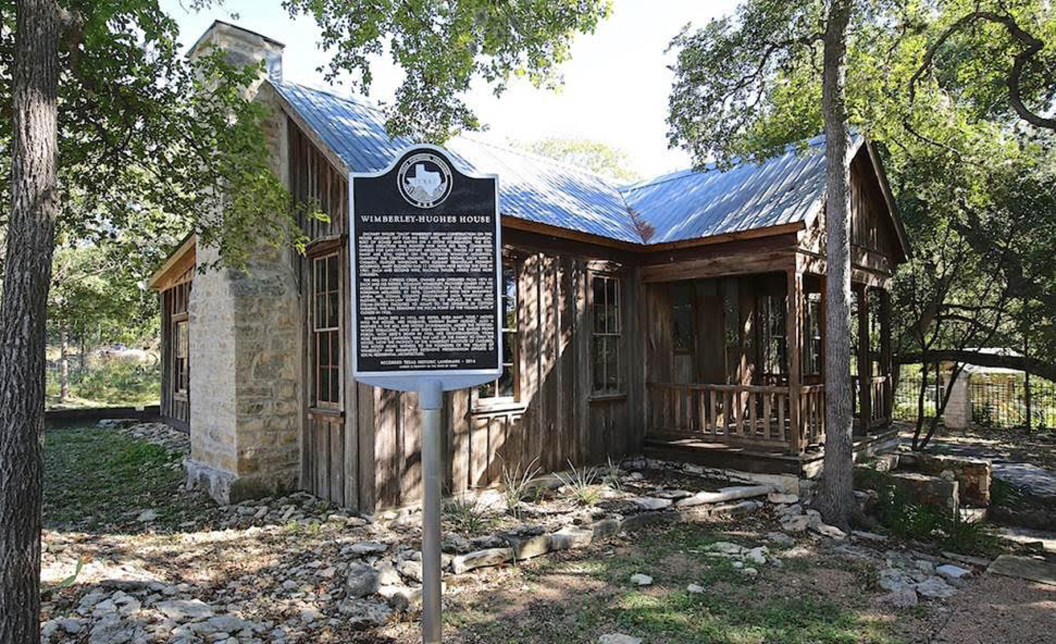
The Wimberley-Hughes House was recorded as a TEXAS HISTORIC LANDMARK in 2016. Zachary Taylor “Zach” Wimberley began construction on this house around 1877 for his first wife, Mary Elizabeth Franklin.
The Building
Built of board and batten on a stone foundation, the end-gabled structure was painted pink with red trim, considered unique for late-19th-century architecture. Traces of red trim paint are still visible on the exterior window moldings. Flanking the central hallway, two main rooms, each with a chimney, feature windows with elegant triangular pediment moldings.
The Family
Mary Elizabeth had 11 children here before she died in 1901. Zach and second wife, Rachael Taylor, added three more children. The mill on Cypress Creek, owned and operated from 1874 by Zach and his father, Pleasant Wimberley, provided lumber for the house. It expanded into the production of flour, cornmeal, and sorghum molasses.
The Mill
By 1898, competition with New Braunfels’ Landa Mill (Comal County) encouraged Zach Wimberley and partner, son-in-law Sidney Pyland, to replace the mill with steam-driven facilities to adapt to the upsurge in cotton farming. The mill remained the focal point of the village until it closed in 1925.
The Heirs
When Zach died in 1913, his sister, Eliza Mary “Lidie,” moved into the house. Her husband, Nathan Emery Hughes, also a partner in the mill and noted stonemason, added the petrified-wood terracing, patio, and steps leading to the gabled front porch.
With Lidie’s death in 1954, her granddaughter, Velma Rose (Hughes) Lawhorn, was the last of the family to own the house. Now the property of the Wimberley Institute of Cultures, this house bears witness to the founders of the village of Wimberley and exemplifies extensive preservation efforts of local residential architecture.
